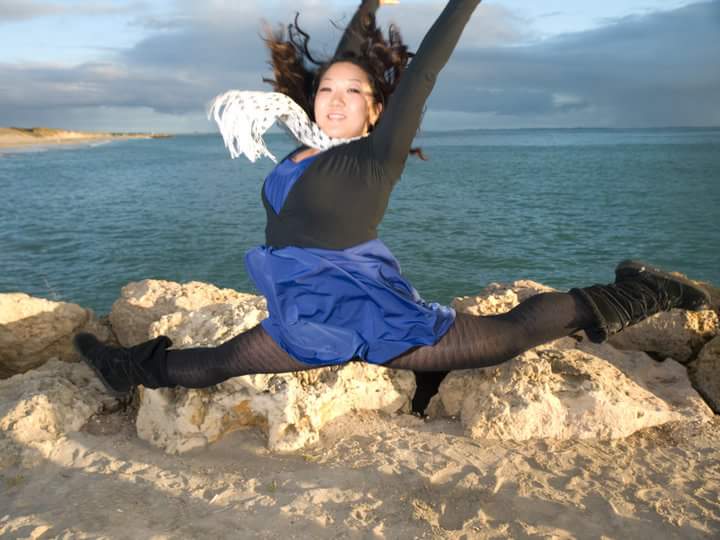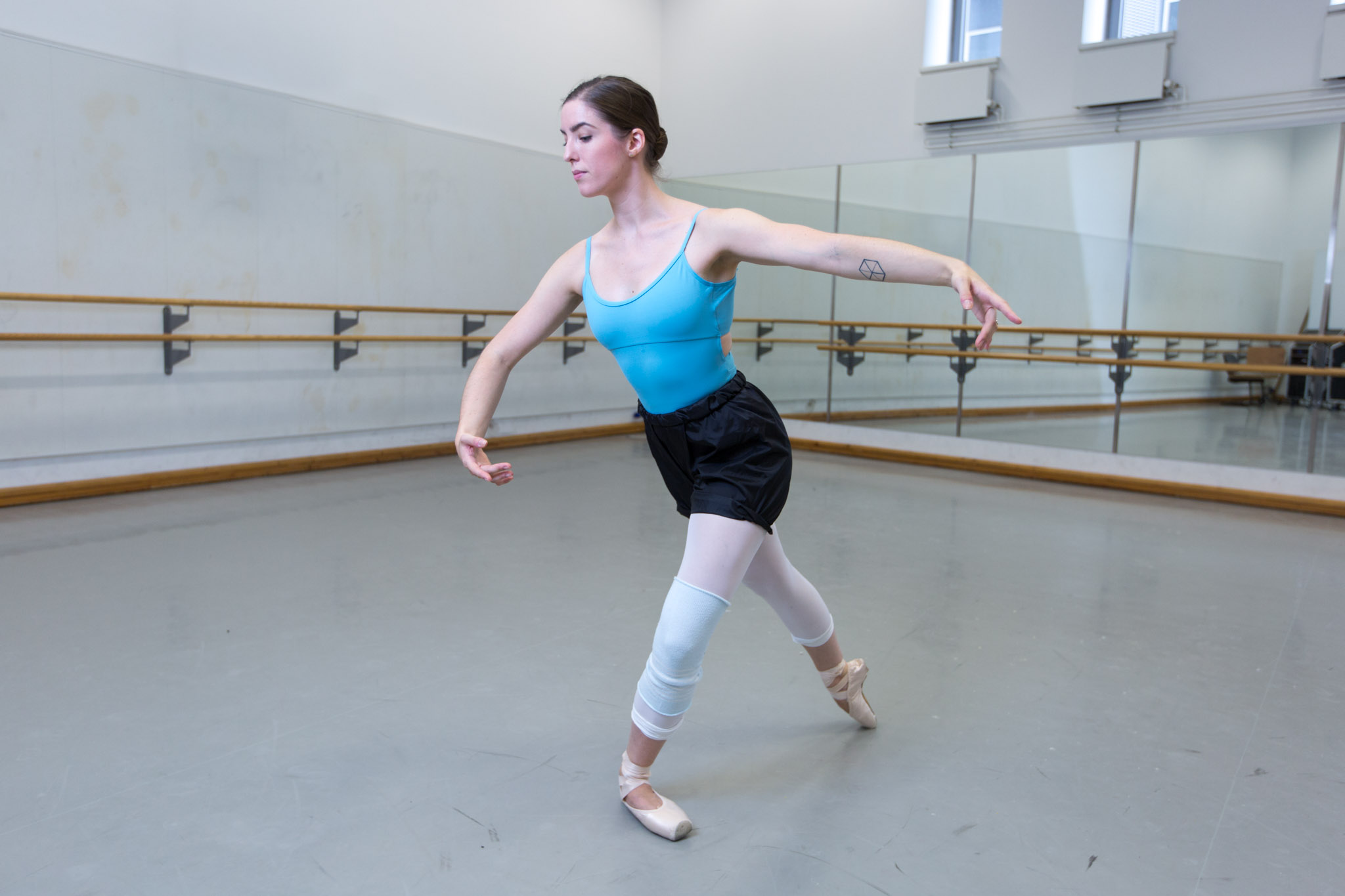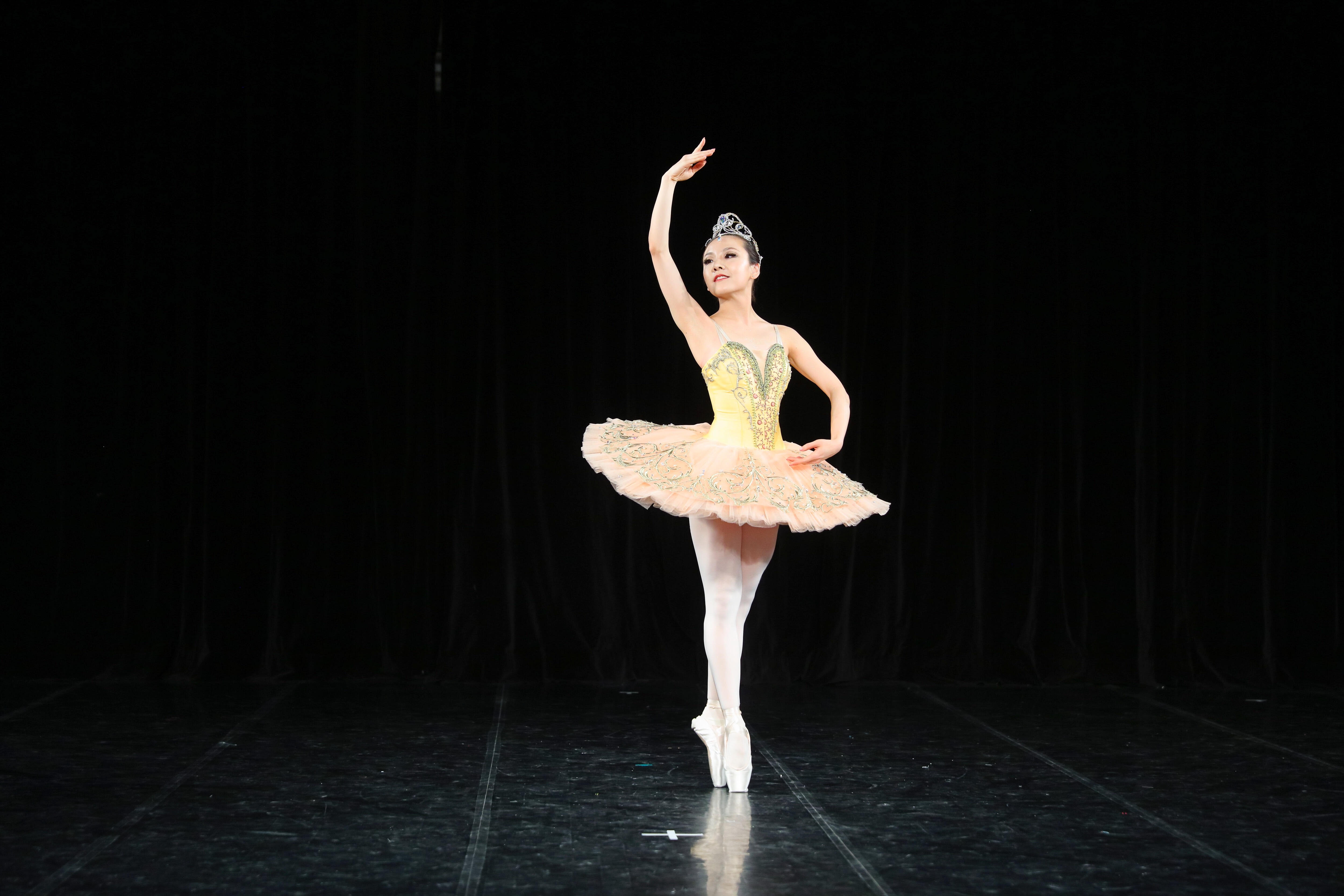While we would never dream of quitting dance, any dedicated, recreational dancer knows that studying ballet as an adult comes with its own set of challenges. We must curb our cravings for studio time with work, family, and various obligations. If we are fortunate enough to find a good balance between these responsibilities, we are always confronted with fresh obstacles.
We worry that our passion for ballet may be too self-indulgent.
We struggle to focus on progress instead of failure.
And we are constantly faced with the realities of our aging bodies.
As dancers, we are acutely aware of our bodies, which is why it seems like a betrayal when they succumb to illness or injury. All we want to do is dance, but our means of doing so—our physical selves, our instruments—feel broken.
How and when will we dance again?
My friend Emilee is currently facing this question, but with the good humor and resilience that I would expect of her. Since she began dancing in 2011, she has been a pleasant, positive force in the adult ballet community, both online and at her home studio, forging genuine connections with others and encouraging them to dance despite their fears. In her blog, Another Night at the Barre, you will see a theme emerge—many iterations of a phrase found throughout her writing: “I wanted this more than I was afraid of it.”
Overcoming fear. This was how Emilee began to dance and how she was able to seize subsequent opportunities in ballet—opportunities she never thought possible. To me, there is nothing more empowering than watching women push anxiety aside in order to do something extraordinary.

Emilee during a performance (a dream come true!)
Fear is one thing, but dealing with illness—something we may never fully “overcome”—is another matter.
Ongoing health issues, including a diagnosis of Chronic Fatigue Syndrome, have disrupted Emilee’s daily life. Finding the energy to work, let alone dance, has been a struggle. Despite all of this, she has fought to keep a healthy perspective, reminding others to “extend yourself grace” during these frustrating times and to remember how far you’ve already come.
She writes in her blog, “I didn’t wait and wish and hope that one day I might dance, I got out there and fumbled around like a baby giraffe until it started to make sense. I chased my crazy dream until it came true. And it did. Just in time, it did. And no matter what happens, no matter if I ever get well or stay sick the rest of my life, no matter if sickness comes in and takes more from me, I will always have that. I will always know I dared to dream and my dreams came true.”
There are so many things I could write about Emilee, but she is also a writer, and her own articulate answers speak for themselves. You will not want to miss her interview below!

Q & A with Emilee
Q. Tell me a little about your background. Where are you from? How old are you? When and where did you begin your dance training?
I’m from a tiny town of 300 called Bayside in Texas, near Corpus Christi along the coast. I’m 28 and started dancing six years ago this October at the age of 23 at a local place called Instep Dance Studios that has since closed down. I now dance at Munro Ballet Studios and also with the Corpus Christi Ballet.
Q. What are your interests and/or occupations outside of dance?
I work for a CPA firm doing bookkeeping, largely. I also take pictures on the side and love to write, whether it be on the blog, random poetry here and there, or in the 50+ journals I’ve filled since I was 12. And reading. I love to read.
Q. What first drew you to ballet? What do you still love about it?
I took classes when I was a kid at a tiny local studio that really doesn’t teach technique. I was six years old, but there was something about ballet that made me feel alive. I loved it. My mom took me out of classes and I always had it in the back of my mind that I wanted to go back one day, but no one really took me seriously about it. When I was old enough to make my own decisions, and also more afraid of never trying than how afraid I was to start, I put out a post on Facebook asking if anyone knew of studios that took super beginner adults. A good friend of mine told me about Instep, and so I emailed them to see what was available. I’m so very glad I did.
Q. How do you prepare for ballet class? Any strange habits or rituals?
I usually get to the studio early, partially because it’s a 45 minute drive, partially because it helps me clear my head before class. When my hands aren’t hurting, I like to have something to crochet before class. It helps me sort of find my center.
Q. At the moment, what is your favorite dancewear brand?
I’m a big fan of Capezio. I also love Eleve Dancewear’s leotards and Flic Flac Dance Skirts on Etsy. Plus, you can’t go wrong with Covet Dance or Cloud & Victory with their super clever dance clothes!
Q. Do you have a favorite step or section of class? Least favorite?
I really love adagio. Something about it makes the whole experience of ballet for me. Realizing that I’m doing the same moves that thousands of dancers before me have done, even though I’ll never be a professional or anywhere close. It’s the history and tradition of it; the connection to dancers past and future.
I’m not a big fan of any sort of allegro in execution, but largely because my legs are uneven so it causes pain to my long leg’s knee as well as my hips and back. My hips are perpetually never square. The struggle.
Q. What is your favorite ballet to watch?
I’m actually fairly new to the ballet world, especially when it comes to viewing. I saw my first live professional ballet just last month, which was La Bayadère at the Houston Ballet. It blew my mind. So incredible. They used to bring the Ballet to the cinema’s here locally, where I got to see Romeo and Juliet and La Fille Mal Gardée. Those dancing chickens are probably my favorite thing I’ve ever seen.
Q. Learning ballet as an adult can be frustrating. Do you have any advice to give to adults who would like to begin or re-begin ballet?
Don’t give up. When I first started I would panic in the corner until one of the “older girls” (she was fourteen) would come and pull me out and do whatever step with me that I was freaking out about. I got in my head a lot. But you have to face that panic and fear and not give up. If it seems overwhelming at first, go home and find ballet dictionaries and YouTube channels online that help break it down until it becomes familiar. Before you know it, you’ll find yourself being the example for the new girls. It’s quite the incredible feeling when you get to that point. (I highly recommend Ballerinas By Night, Kathryn Morgan, and Claudia Dean on YouTube)
Q. As I continue to train, I’m finding that I would like to know more about music and music theory. Do you have any sort of musical background or training? How does a good pianist affect class?
I always wanted to learn violin, but once again my family didn’t take me seriously. (It’s still on my list.) I’ve found myself drawn to music, though I don’t play any instruments myself. I did get thrown into running the sound board at my church once and apparently did it well, though I’ve never had any training. I do have many classical music vinyls and albums on my iTunes that I love listening to when I get a chance.
A good pianist is everything. I feel they are the well placed adjectives and adverbs in the sentence that is dance. Just enough to flourish the sentence to give the reader a true feel for what is being expressed. For me, it also makes me feel more official, giving me the sense of pride that makes me stand up straighter and approach the class giving 100% of what I have to offer.
Q. What are your goals for your dance training and for your life in general?
My current goals are largely just to keep with it. Most of the goals I had developed as my training progressed have been achieved. I earned my pointe shoes at age 25, was in my first performance the next year, and my main goal–to be in the most advanced ballet class and dance of our spring performance–was accomplished this past spring. When I started out, I never expected to be able to accomplish all the things I’ve been able to, especially in performing (and especially at my age.) For now, I would love to just continue to teach the baby ballet classes I get to teach at my studio. This year is my second year, and those kids are the fire in my belly. They help put things in perspective when things get hard or when my body decides to work against me.
Q. You’ve been honest about your struggles with illness and finding the energy to dance. What would you like to say to others who are facing similar issues? Have you been able to strike a good balance between dance and the rest of life for the sake of your health?
The balance is still a struggle, especially since the diagnosis I do have is so new, and the illness I’ve had for years still isn’t diagnosed. I don’t really know what I’m going to get one day to the next until I wake up. Sometimes it’s just enough to get through the work day, sometimes it’s that and a bit more, sometimes just getting through work is a struggle itself.
The important thing is to figure out what works for you. To know your limits, but also know when you need to push them. Ballet is so important in keeping my body as healthy and functional as it is, especially for my digestion, arthritis, and chronic fatigue syndrome issues, but I do have to realize that there are some days where pushing it will do more harm than good. At the same time, I can’t be afraid to push through on other days when I know my soul needs the studio time.
Also, a diagnosis isn’t a death wish. It may cause you to have to adjust some goals and dreams, but it doesn’t make them impossible even if it seems like it now. Take it one day at a time and do what you are able. You never know what doors will open when you least expect it. And don’t beat yourself up if you aren’t able to do as much as you’d like. Unfortunately, we’re all human, and sometimes human bodies work against us more than they work with us. Take it as it comes. Being active is important and does so much good for our bodies, but we also have to find what works for us.
And don’t compare yourself to others! In health and in life in general, really. Your story can’t be the story of the person next to you. We have to do what’s best for us. I could go on and on, but really, just fight for what you want and remember to extend yourself grace when you need it.
To connect with Emilee, follow her on Instagram @anothernightatthebarreofficial and visit her blog, Another Night at the Barre.









 I first dabbled with dance in a “ballet”/creative movement class when I was about three years old. Despite loving the class, at the end of year concert I refused to dance (instead taking my headband off numerous times while my cousin picked it up and put it back on my head – I must’ve thought it was a game) and then cried when I had to leave the stage.
I first dabbled with dance in a “ballet”/creative movement class when I was about three years old. Despite loving the class, at the end of year concert I refused to dance (instead taking my headband off numerous times while my cousin picked it up and put it back on my head – I must’ve thought it was a game) and then cried when I had to leave the stage.
 “Slow Death by Penché” has a special place in my heart. It’s something one of my teachers has said numerous times. “Barre Wars – Return of the Jeté” is probably my favourite though.
“Slow Death by Penché” has a special place in my heart. It’s something one of my teachers has said numerous times. “Barre Wars – Return of the Jeté” is probably my favourite though.
















 Q. You dance with your fiancé Brian. How did he end up being interested in ballet? And what’s it like taking class together?
Q. You dance with your fiancé Brian. How did he end up being interested in ballet? And what’s it like taking class together?












